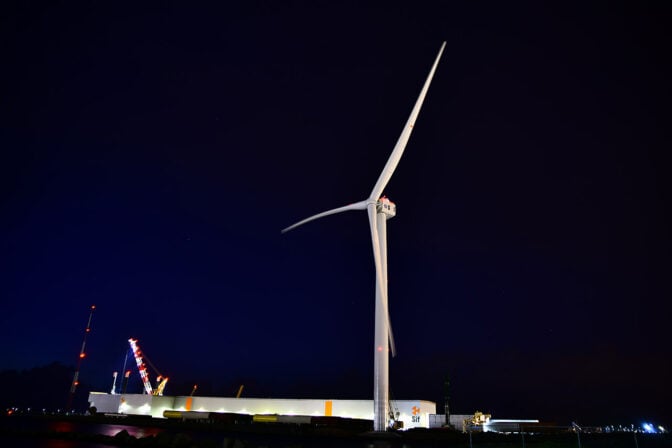Wind, hydro and solar are estimated to have generated 90TWh of clean electricity between 1 January and 31 December 2023, according to new analysis from the Energy and Climate Intelligence Unit (ECIU).
The non-profit organisation added that generating the same amount of power using gas power stations would require over 180TWh of gas.
Nuclear and biomass in turn, produced roughly 60TWh of electricity in 2023, added the ECIU.
Using analysis from its Power Tracker, the ECIU noted that renewable generation increased in each quarter of 2023 when compared to 2019, increasing by a 1/4 in Q1 2023.
Renewable successes were celebrated throughout the year, including new records such as 52% of Britain’s electricity being supplied by low-carbon sources in July and wind beating its generation record for the fourth time is many months, reaching 21.62GW on 10 January 2023, before beating it yet again on 21 December, hitting 21.8GW.
Additionally, the electricity service company Drax revealed last year that Q3 3023 was the lowest-carbon quarter on record, as emissions fell to 143g/kWh. The ECIU noted that gas generation fell by between 20% and 30% in each quarter of 2023, compared to 2019.
Maintaining momentum
Wind, particularly offshore wind, will be the key to the UK’s success in meeting increased electricity demand as we move to an electrified grid.
The UK has an offshore wind operational capacity target of 50GW by 2030, and there have been some exciting developments in this market, including the first of three 1.2GW sections of the largest wind farm in the world – Dogger Bank – being connected to the UK grid and exporting electricity for the first time in October.
However to ensure the UK meets its target adequate support – especially in the form of subsidies – will be paramount. An example of the devastating effects of unfavourable subsidy options was seen in the fifth auction round (AR5) of the Contracts for Difference (CfD) scheme which saw no offshore wind projects bid due to low strike prices.
The government has already acted on this lose, increased the strike price for offshore wind by 66% (from £44/MWh to £73/MWh) for AR6; a move that was met with great relief from the renewables industry.
Upgrading and building new grid infrastructure will also be required to handled the increased volumes of electricity that will be required to meet demand. To this end, a number of ambitious plans have been announced, including the National Grid accelerating the connection of 10GW of battery storage projects and the UK government and Ofgem jointly publishing the Grid Connections Action Plan outlining an overhaul that could release 100GW of capacity from the connections queue.
According to the ECIU, the UK has the highest gas dependency in Europe, with 40% of the nation’s power and 85% of our home heating being provided by the fossil fuel industry. This means the UK must accelerate and then maintain the momentum of electrification to both insulate the nation from volatile wholesale gas prices and fight climate change.





